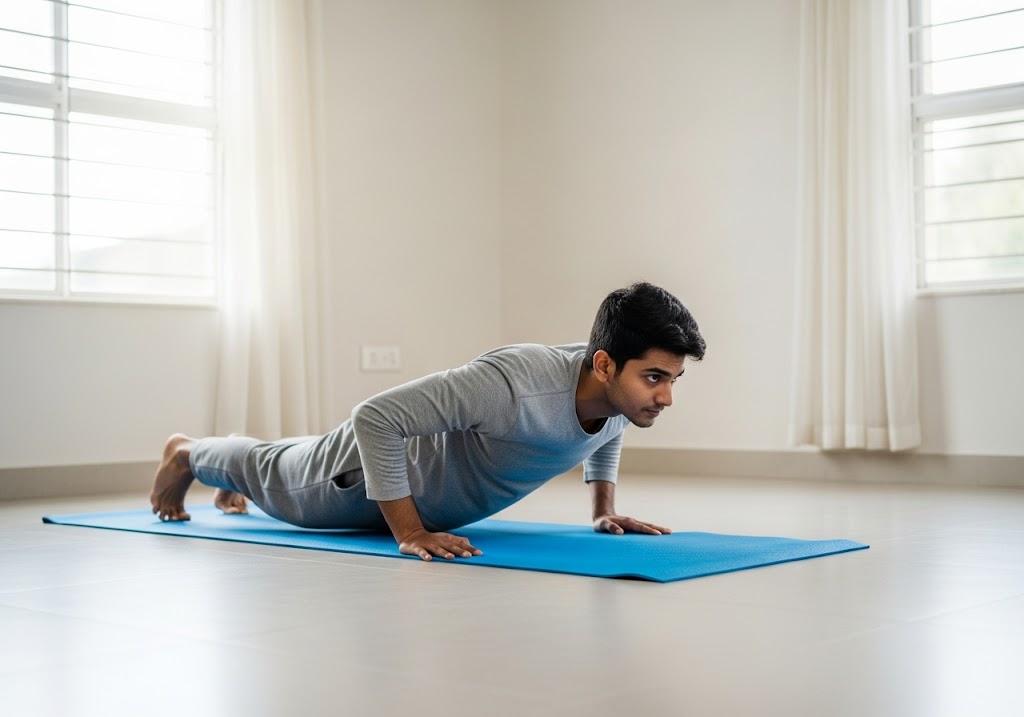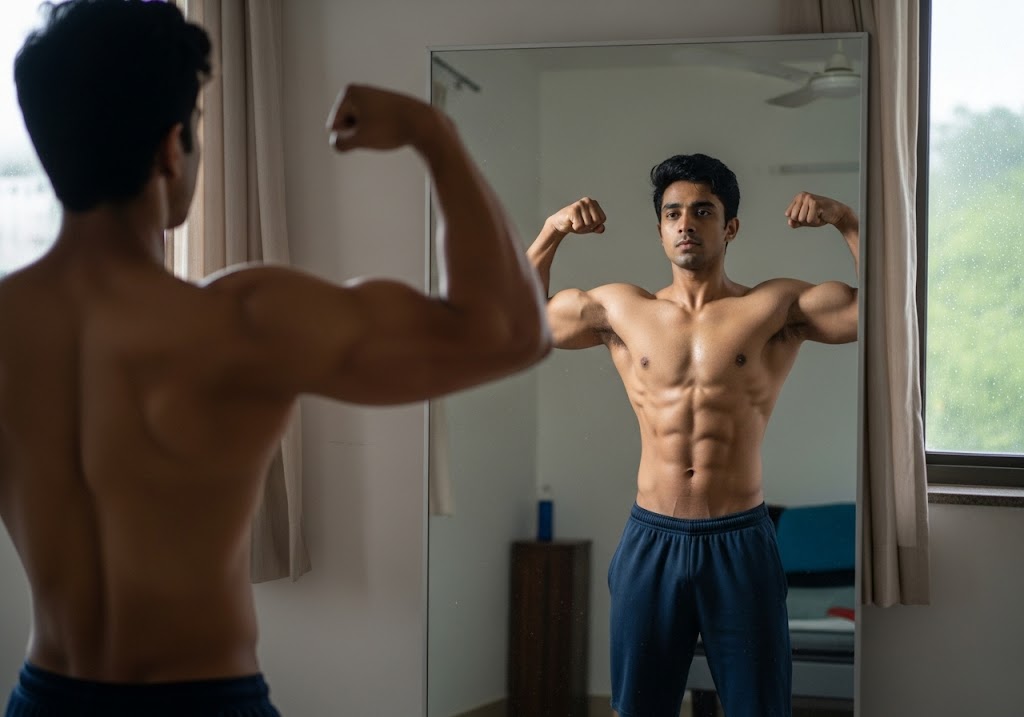Hack squat vs leg press represent two of the most effective machine-based exercises for building powerful lower body strength and muscle mass. Both exercises target your quadriceps, hamstrings, and glutes, but they accomplish this through different movement patterns and muscle activation strategies. Hack squat vs leg press differ mainly in muscle activation, with hack squats engaging more stabilizing muscles while leg press allows heavier loads with better isolation of quads.
Understanding the differences between hack squat vs leg press helps you choose the right exercise for your specific fitness goals. Whether you’re looking to build maximum strength, develop muscle size, improve athletic performance, or work around injuries, each exercise offers distinct advantages that can enhance your training results.
This detailed comparison explores every aspect of hack squat vs leg press, from muscle activation patterns to safety considerations. You’ll discover which exercise works better for different training goals, how to perform each movement correctly, and when to incorporate them into your workout routine for optimal results.
Table of Contents
Understanding Hack Squat vs Leg Press Fundamentals
Learning the basic differences between hack squat vs leg press helps you make informed decisions about your lower body training approach. These machine exercises share similar target muscles but achieve results through distinctly different movement patterns and loading mechanisms.
| Aspect | Hack Squat | Leg Press |
|---|---|---|
| Body Position | Upright, back against pad | Seated or lying, reclined |
| Weight Loading | Shoulders bear the load | Feet push against platform |
| Movement Pattern | Vertical squatting motion | Horizontal pushing motion |
| Primary Muscles | Quads, glutes, hamstrings | Primarily quadriceps |
| Stabilizer Activation | High (core, calves) | Low (machine-supported) |
| Range of Motion | Typically deeper | Variable by foot placement |
| Learning Curve | Moderate difficulty | Beginner-friendly |
The hack squat positions you in a more upright stance with weight loaded on your shoulders, closely mimicking a traditional barbell squat. This positioning in hack squat vs leg press comparison creates greater demand on stabilizing muscles throughout your core and lower body. The movement pattern follows a natural squatting motion that translates well to functional activities and other compound exercises.
The leg press places you in a seated or reclined position where you push weight away from your body using a foot platform. This setup in the hack squat vs leg press debate offers superior stability and allows for heavier loading since the machine supports your torso. The controlled environment makes it easier to focus purely on pushing maximum weight without worrying about balance or coordination.
Learn about growth benefits with our does calisthenics increase height analysis.
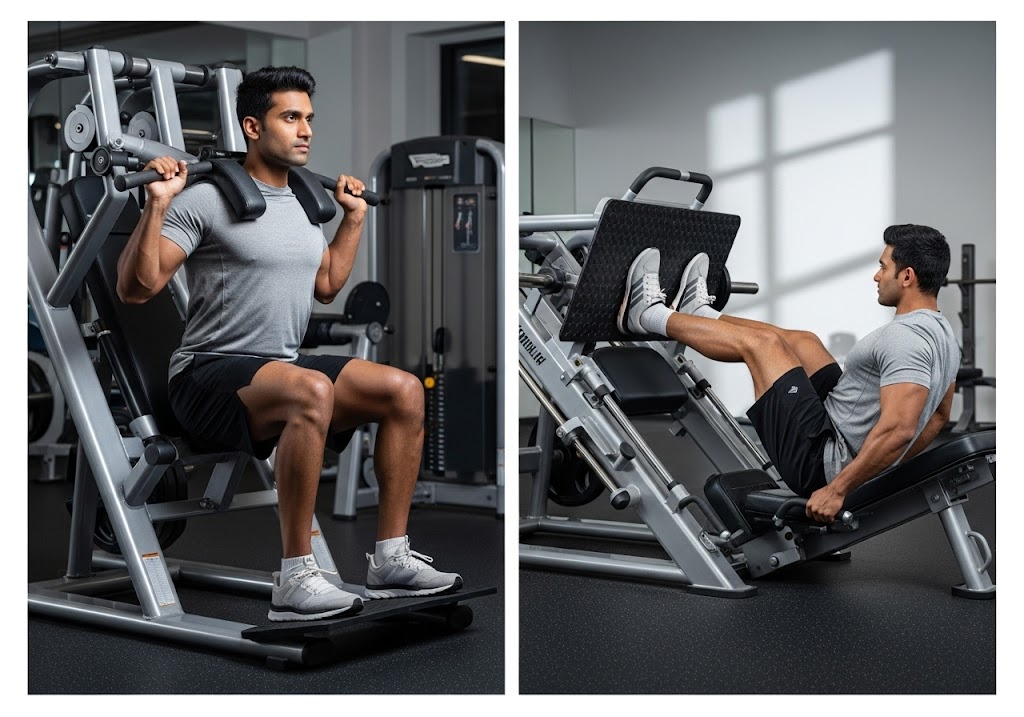
Hack Squat vs Leg Press: Muscle Activation
Understanding muscle activation differences between hack squat vs leg press helps optimize your training approach. Each exercise targets similar muscles but with varying activation levels and recruitment patterns, making this knowledge crucial for selecting the right exercise based on your specific development goals.
| Muscle Group | Hack Squat Activation | Leg Press Activation |
|---|---|---|
| Quadriceps | High – all four heads | Very High – primary focus |
| Glutes | High – especially at depth | Moderate – variable by foot position |
| Hamstrings | Moderate – synergist role | Low-Moderate – secondary |
| Calves | Moderate – stabilizing | Low – minimal involvement |
| Core/Abs | High – stability demand | Very Low – machine supported |
| Erector Spinae | Moderate – postural support | Minimal – back supported |
| Hip Flexors | Moderate – depth dependent | Low – limited hip flexion |
| Adductors | Moderate – stance dependent | Variable – foot position dependent |
Develop pulling strength with our calisthenics close grip pull ups and calisthenics wide grip pull ups techniques.
Hack Squat vs Leg Press: Strength & Power Development
Strength and power development capabilities vary significantly between hack squat vs leg press exercises. Understanding these differences helps determine which exercise better supports your performance goals, whether you’re focusing on maximum strength, explosive power, or sport-specific athletic development requirements.
| Development Aspect | Hack Squat | Leg Press |
|---|---|---|
| Functional Strength | Excellent – compound pattern | Good – isolated strength |
| Maximum Load Capacity | High (200-400 kg typical) | Very High (300-600 kg typical) |
| Power Development | Excellent – explosive movement | Good – controlled power |
| Athletic Transfer | High – sport-specific patterns | Moderate – limited transfer |
| Neuromuscular Coordination | High – stability demands | Low – machine guided |
| Strength Curve | Variable – peak at bottom | Consistent – throughout ROM |
| Progressive Overload Rate | Moderate – stability limited | Fast – pure strength focus |
| Beginner Progression | Moderate learning curve | Easy – simple technique |
Progressive Overload Strategies
Progressive overload application differs significantly between these exercises, requiring specific approaches for optimal results. Hack squats typically progress through smaller weight increments due to the challenging stability requirements and compound muscle demands. Most hack squat machines use 20-25 kg weight plates, making progression increments of 10-20 kg per side realistic for intermediate to advanced lifters. Beginners should focus on bodyweight and light loads (10-20 kg total) while mastering proper form and movement patterns. The stability challenge means strength gains often come from improved coordination as much as increased muscle force production.
Leg press machines typically accommodate larger weight loads, with some commercial machines handling 300-500 kg or more. Progression can be more aggressive, with intermediate lifters often adding 10-40 kg per week depending on their training phase. Beginners can start with just the weight of the platform (usually 20-45 kg) and progress systematically as strength improves.
Build comprehensive upper body strength with our calisthenics chest exercises collection.
Athletic Performance Transfer
The transfer of strength gains to athletic performance varies considerably between hack squat vs leg press exercises. Hack squats demonstrate superior transfer to sport-specific movements due to their compound nature and movement pattern similarity to athletic actions. Research suggests that hack squats improve vertical jump performance, sprint acceleration, and change-of-direction speed more effectively than isolation exercises. The multi-joint movement pattern and stability requirements closely match the demands of most athletic activities. Athletes in sports like basketball, football, and track and field often find greater performance improvements when emphasizing hack squat variations in their training.
Learn more about joint health with our what is foam rolling article for recovery strategies.
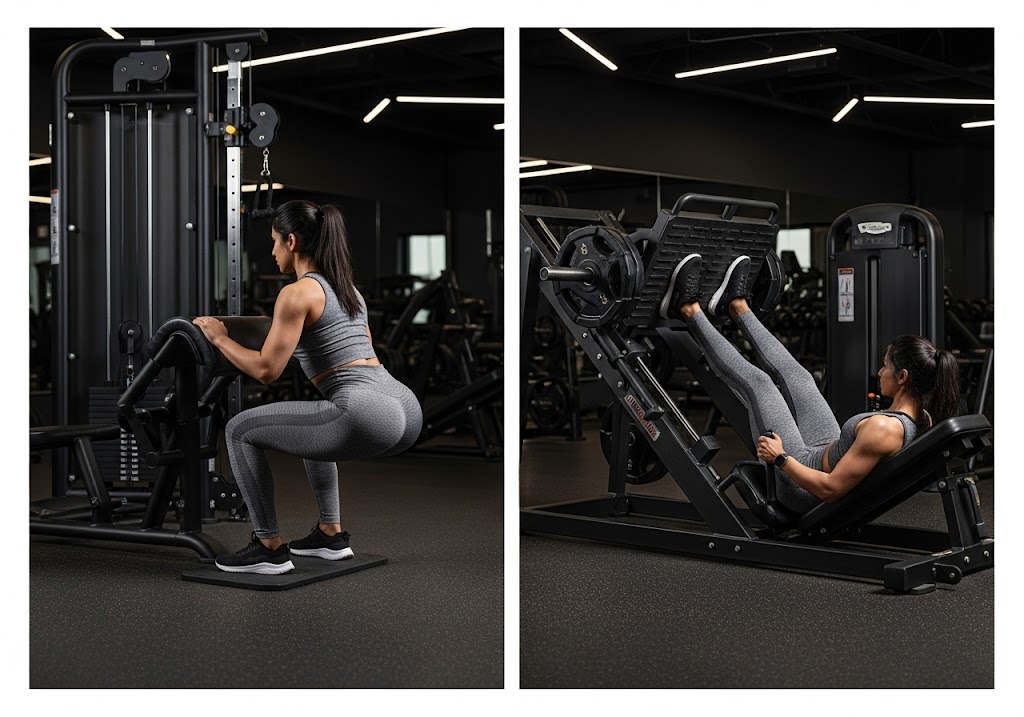
Hack Squat vs Leg Press: Quad vs Glute Emphasis
Muscle emphasis patterns differ significantly between hack squat vs leg press exercises, affecting your ability to target specific muscle groups. Understanding these emphasis differences helps optimize your training for either quadriceps-focused development or balanced quad and glute strengthening based on your physique goals.
| Muscle Focus | Hack Squat | Leg Press |
|---|---|---|
| Quadriceps Emphasis | High – all four heads | Very High – primary target |
| Vastus Medialis (Inner Quad) | Excellent – deep position | Good – foot position dependent |
| Rectus Femoris | High – hip flexion component | Moderate – limited hip involvement |
| Glute Activation Level | High – deep range of motion | Moderate – adjustable by stance |
| Glute Maximus Focus | Excellent – bottom position | Good – wide stance helps |
| Hamstring Involvement | Moderate – synergistic | Low – minimal contribution |
| Customization Options | Limited – fixed movement | Excellent – foot placement variety |
| Isolation Potential | Moderate – compound nature | High – targeted muscle focus |
Check out our how to do glute bridge tutorial for additional glute strengthening exercises.
Hack Squat vs Leg Press: Spinal & Joint Loading
Spinal and joint loading patterns represent crucial safety considerations when comparing hack squat vs leg press exercises. Understanding these loading characteristics helps you make informed decisions based on your injury history, physical limitations, and long-term joint health priorities for optimal training selection.
| Loading Factor | Hack Squat | Leg Press |
|---|---|---|
| Spinal Compression | Moderate – shoulder loading | Minimal – back supported |
| Lower Back Stress | Low-Moderate – upright posture | Very Low – reclined position |
| Knee Joint Stress | Moderate – deep flexion | Moderate – controlled by depth |
| Hip Joint Mobility Demand | High – deep hip flexion | Moderate – limited range |
| Ankle Mobility Required | High – dorsiflexion needed | Moderate – platform dependent |
| Shoulder Joint Involvement | High – pad positioning | None – no upper body load |
| Overall Joint Safety | Good – guided movement | Excellent – machine stability |
| Injury Risk Level | Moderate – form dependent | Low – supported position |
Build comprehensive upper body strength with our calisthenics chest exercises collection.
Joint Stress Analysis
Joint stress patterns reveal different considerations for knee, hip, and ankle health between hack squat vs leg press exercises. Understanding these stress patterns helps prevent injury and optimize joint longevity. Knee joint stress in hack squats occurs primarily in the sagittal plane with natural tracking patterns. The deeper range of motion increases knee flexion angles, which can be beneficial for mobility but may stress individuals with existing knee problems. Proper form with controlled descent and avoiding knee valgus (inward collapse) minimizes harmful stress patterns. Hip joint mobility requirements differ between hack squat vs leg press exercises. Hack squats demand greater hip flexion and mobility, making them excellent for maintaining and improving hip function. However, individuals with hip impingement or limited mobility may struggle with proper form and experience discomfort.
Explore high-intensity training benefits with our can hiit build muscle analysis for muscle development.
Hack Squat vs Leg Press: Range of Motion
Range of motion capabilities significantly impact muscle development and functional benefits when comparing hack squat vs leg press exercises. Understanding these movement range differences helps maximize muscle-building potential and flexibility improvements while ensuring safe execution throughout your training sessions.
| ROM Factor | Hack Squat | Leg Press |
|---|---|---|
| Typical Knee Flexion | 90-130 degrees | 80-120 degrees |
| Hip Flexion Range | 90-110 degrees | 70-100 degrees |
| Ankle Mobility Requirement | High – deep dorsiflexion | Moderate – platform dependent |
| Individual Variation | Moderate – anatomy dependent | High – machine design varies |
| Flexibility Benefits | Excellent – active stretching | Good – controlled stretching |
| Depth Limitation Factors | Ankle mobility, hip flexibility | Machine design, limb length |
| Full ROM Muscle Activation | Superior – stretched position | Good – variable by depth |
| Safety at End Range | Good – controlled descent | Excellent – machine stops |
Optimizing Range of Motion
Maximizing range of motion safely requires specific techniques for hack squat vs leg press exercises. Proper setup and form modifications can help you achieve optimal range while minimizing injury risk. For hack squats, focus on ankle mobility and proper foot placement to achieve maximum depth. Position your feet shoulder-width apart with slight external rotation. Descend slowly and controlled until you reach your maximum comfortable depth, typically when your thighs are parallel to the platform or slightly below. Avoid bouncing at the bottom position to prevent knee stress. Leg press range of motion optimization involves adjusting seat position and foot placement. Position yourself so your knees can flex to approximately 90 degrees or as deep as comfortable without your lower back rounding. Place feet on the platform in a position that allows full range while maintaining proper knee tracking over your toes.
Explore our calisthenics ab workout for additional core strengthening exercises.
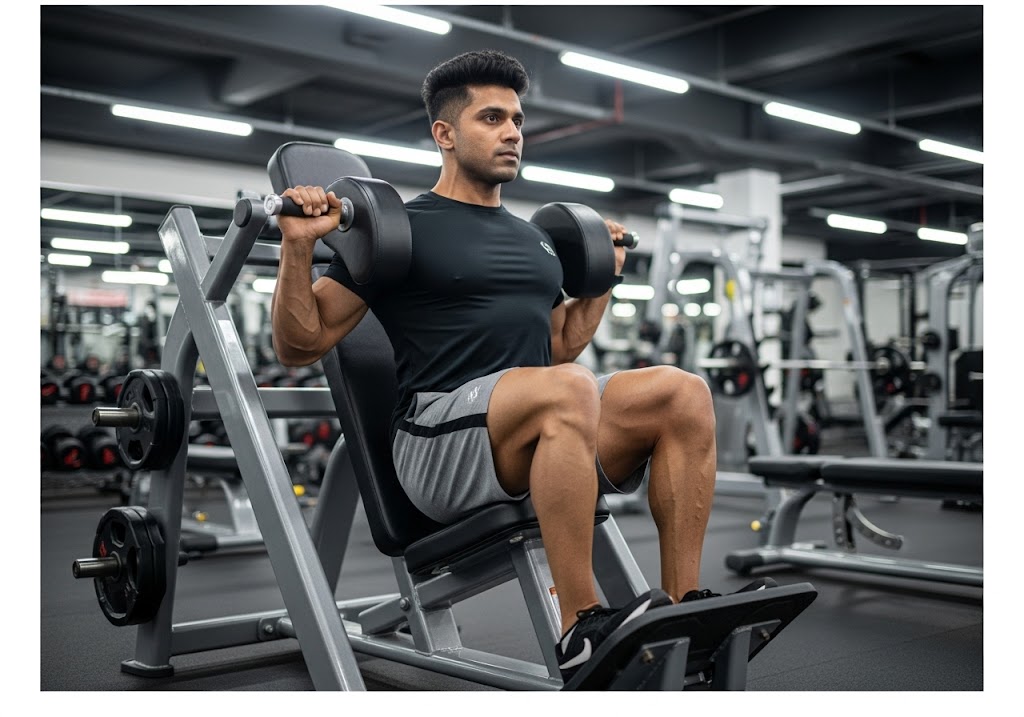
Hack Squat vs Leg Press: Core Engagement & Stability
Core engagement and stability requirements vary dramatically between hack squat vs leg press exercises, significantly impacting both muscle development and functional strength outcomes. Understanding these stability demands helps you choose appropriate exercises based on your core strength goals and current ability levels.
| Stability Factor | Hack Squat | Leg Press |
|---|---|---|
| Core Activation Level | High – constant engagement | Very Low – machine supported |
| Deep Core Muscles | High – transverse abdominis | Minimal – passive position |
| Diaphragm Engagement | High – breathing under load | Low – relaxed breathing |
| Pelvic Floor Activation | Moderate – stability demand | Minimal – supported pelvis |
| Balance Requirements | High – proprioceptive challenge | None – stable platform |
| Coordination Demands | High – multi-joint movement | Low – guided path |
| Functional Core Training | Excellent – real-world transfer | Poor – isolated leg focus |
| Core Fatigue Impact | Significant – limits performance | Minimal – no limitation |
Stability Training Benefits
The stability training benefits vary significantly between hack squat vs leg press exercises, with each offering distinct advantages for different training goals and populations. Hack squats provide excellent stability training through their dynamic balance requirements. The need to maintain proper alignment while controlling weight through a full range of motion develops neuromuscular coordination and proprioceptive awareness. These stability adaptations improve performance in free-weight exercises and reduce injury risk in daily activities. Athletes particularly benefit from the stability demands of hack squats as they closely mimic the balance and coordination requirements of sport-specific movements. The ability to generate force while maintaining stability is crucial for athletic performance, making hack squats valuable for sports preparation and performance enhancement.
Learn advanced pressing techniques with our how to do arnold press tutorial for shoulder development.
Core Development Comparison
Core development outcomes differ significantly in the hack squat vs leg press comparison, with implications for both aesthetic and functional goals. Hack squats promote core development through isometric strengthening of deep stabilizing muscles. While not providing the same core challenge as free-weight squats, hack squats still require significant core activation to maintain proper posture and spinal alignment. Regular hack squat training can contribute to improved core strength and stability.
Discover effective equipment options with our calisthenics equipment for home setup guide.
Hack Squat vs Leg Press: Equipment Accessibility & Setup
Equipment accessibility and setup considerations play crucial roles in determining the practicality of hack squat vs leg press exercises. Understanding these factors helps you make realistic training choices based on available resources, technical skill requirements, and time constraints in your workout environment.
| Accessibility Factor | Hack Squat | Leg Press |
|---|---|---|
| Gym Availability | Less common – premium equipment | Very common – standard equipment |
| Machine Variety | Limited – few design types | Extensive – multiple configurations |
| Setup Complexity | Moderate – pad positioning | Simple – intuitive operation |
| Weight Loading Ease | Challenging – angled loading | Easy – horizontal loading |
| Safety Mechanism | Moderate – requires understanding | Simple – obvious stops |
| Space Requirements | Compact – smaller footprint | Large – significant floor space |
| Learning Curve | Moderate – technique focused | Minimal – user-friendly |
| Home Gym Viability | Good – affordable options | Fair – expensive, space-demanding |
Home Gym Considerations
Home gym implementation differs significantly for hack squat vs leg press options due to space, cost, and versatility factors. Hack squat machines for home use are typically more compact and less expensive than leg press machines. Some models combine hack squat functionality with other exercises, making them more versatile for limited space situations. However, the weight capacity may be limited compared to commercial machines, and the build quality varies significantly between manufacturers. Leg press machines for home gyms range from simple sled-style units to sophisticated pneumatic or weight stack systems. While often more expensive than hack squat alternatives, leg press machines may offer better value for users prioritizing maximum loading capacity and exercise variety through different foot positions.
Learn proper warm-up techniques with our how to do jumping jacks exercise tutorial.
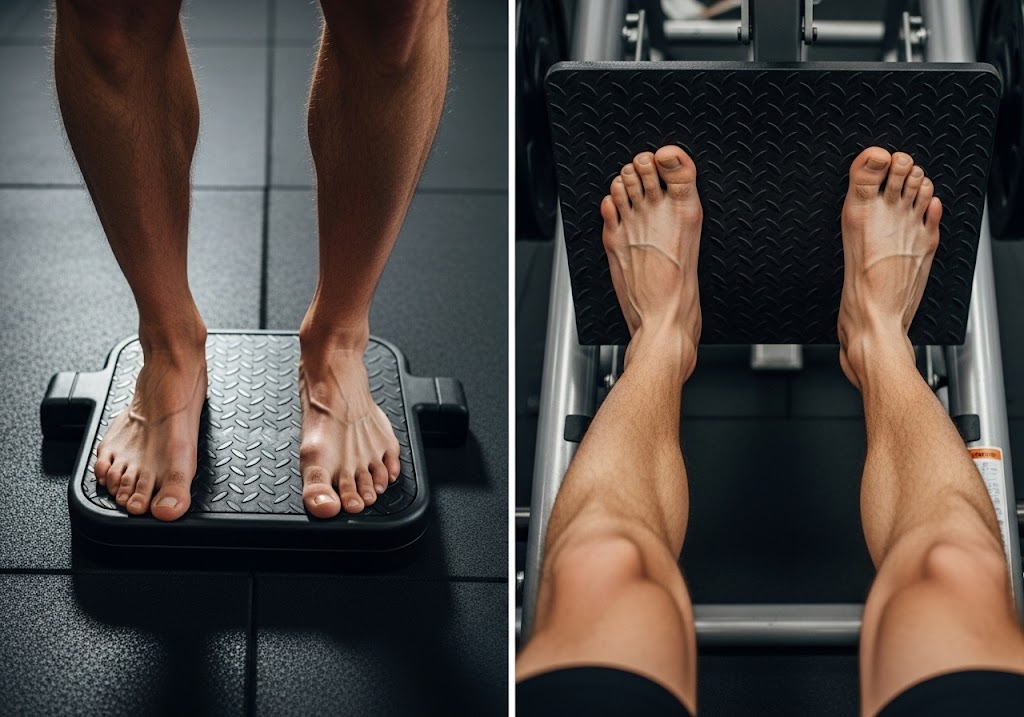
Hack Squat vs Leg Press: Safety & Injury Risk
Safety considerations and injury risk profiles differ significantly between hack squat vs leg press exercises, making this crucial for exercise selection. Understanding these safety factors helps individuals with varying injury histories and physical limitations make informed decisions for long-term training success.
| Safety Factor | Hack Squat | Leg Press |
|---|---|---|
| Overall Injury Risk | Moderate – form dependent | Low – machine supported |
| Form Breakdown Risk | Higher – stability demands | Lower – guided movement |
| Knee Injury Potential | Moderate – tracking critical | Low-Moderate – controlled path |
| Lower Back Risk | Low-Moderate – loading present | Very Low – supported position |
| Shoulder Strain Risk | Moderate – pad positioning | None – no upper body load |
| Training to Failure Safety | Challenging – coordination loss | Excellent – stable position |
| Beginner Safety Rating | Moderate – requires instruction | High – intuitive operation |
| Spotter Requirement | Helpful – form assistance | Optional – machine safety |
Injury Prevention Strategies
Implementing proper injury prevention strategies is crucial for safe execution of hack squat vs leg press exercises. For hack squats, focus on gradual progression and mastering proper form before adding significant weight. Start with bodyweight or light loads to develop movement patterns and stability. Pay attention to knee tracking, maintaining neutral spine alignment, and controlling both the descent and ascent phases of the movement. Always warm up thoroughly and avoid training to absolute failure until you have extensive experience with the movement.
Leg press injury prevention centers around respecting individual range of motion limits and maintaining proper setup. Adjust the seat and foot placement to accommodate your individual anatomy and mobility limitations. Avoid excessive knee flexion that causes lower back rounding, and maintain consistent foot pressure throughout the movement. Use the safety stops appropriately and never allow the weight to rest on the stops between repetitions.
Check out our arm workouts with dumbbells women’s guide for upper body training.
Hack Squat vs Leg Press: Progressive Overload Potential
Progressive overload capabilities differ significantly between hack squat vs leg press exercises, impacting long-term strength and muscle development outcomes. Understanding these progression characteristics helps you plan effective training programs that continue producing results and avoid plateaus over extended periods.
| Overload Factor | Hack Squat | Leg Press |
|---|---|---|
| Weight Progression Rate | Moderate – stability limited | Fast – pure strength focus |
| Maximum Load Capacity | High (200-400 kg typical) | Very High (300-600 kg typical) |
| Volume Tolerance | Moderate – fatigue accumulates | High – machine stability |
| Plateau Frequency | Common – coordination limits | Less Common – pure strength |
| Variation Options | Limited – fixed movement | Extensive – foot positions |
| Advanced Technique Suitability | Challenging – form critical | Excellent – stable platform |
| Long-term Progression | Steady – technique dependent | Aggressive – load focused |
| Beginner Progression Speed | Slow – learning curve | Fast – simple execution |
Advanced Progression Techniques
Advanced progression techniques help overcome plateaus and continue making gains with hack squat vs leg press exercises. Hack squat progression can utilize techniques such as pause reps, slow eccentrics, and partial range variations to increase intensity without necessarily adding weight. Cluster sets work well for hack squats by allowing brief rest periods between reps to maintain form quality while using heavier loads. Unilateral variations, where available, can address imbalances and provide progression opportunities.
Leg press progression benefits from numerous advanced techniques including rest-pause sets, drop sets, and high-frequency training protocols. The machine’s stability makes these intensity techniques safer to implement compared to free-weight exercises. Foot position variations allow for continued progression by targeting muscles from different angles and recruitment patterns.
Learn about calorie burning with our how many jumping jacks to burn 500 calories calculation guide.
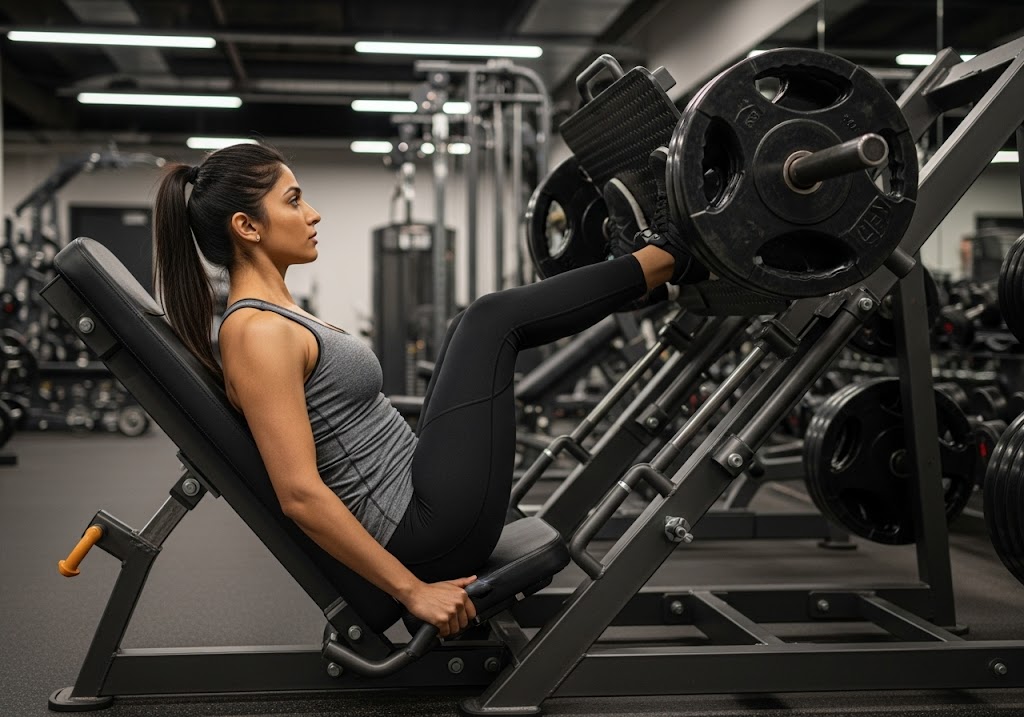
Hack Squat vs Leg Press: Functional Strength & Athletic Carryover
Functional strength development and athletic carryover represent crucial considerations when choosing between hack squat vs leg press exercises. Understanding these transfer benefits helps optimize your training selection for sports performance enhancement and real-world movement improvement goals.
| Functional Aspect | Hack Squat | Leg Press |
|---|---|---|
| Real-World Movement Transfer | High – squat pattern mimics life | Moderate – limited application |
| Athletic Performance Carryover | Excellent – sport-specific | Fair – strength only |
| Balance & Coordination | High – proprioceptive demands | None – machine stability |
| Multi-Joint Integration | Excellent – compound movement | Poor – isolated pattern |
| Core Stability Transfer | High – functional engagement | Minimal – no transfer |
| Power Development Transfer | High – explosive capability | Moderate – controlled power |
| Daily Activity Benefits | Excellent – stairs, lifting | Limited – seated strength |
| Sport-Specific Applications | Wide variety – most sports | Narrow – rehabilitation focus |
Complete your upper body training with our chest and tricep workout with dumbbells program.
Sport-Specific Applications
Different sports benefit more from specific aspects of hack squat vs leg press training based on their movement demands and performance requirements. Power sports athletes often find greater benefit from hack squat training due to the compound movement pattern and functional strength development. The ability to generate force through a full range of motion while maintaining stability closely matches the demands of jumping, sprinting, and explosive directional changes common in many sports.
Explore cardiovascular benefits with our Jumping Jacks Exercise Benefits analysis.
Bodybuilding and physique-focused athletes may prefer leg press exercises for their superior isolation capabilities and ability to train specific muscle groups to failure safely. The machine’s stability allows for advanced intensity techniques and high-volume training that can maximize muscle growth in target areas.
Discover more about athletic performance with our calisthenics for weight loss training methods.
Hack Squat Machine vs Leg Press
The direct comparison between hack squat machine vs leg press reveals specific advantages for equipment selection and training decisions. Understanding machine-specific characteristics helps optimize your lower body development programs while considering space, cost, and versatility factors for optimal gym setup.
| Machine Factor | Hack Squat Machine | Leg Press Machine |
|---|---|---|
| Space Requirements | Compact – smaller footprint | Large – significant floor space |
| Cost Range | Moderate – $2,000-8,000 | High – $3,000-15,000 |
| Weight Capacity | High – 300-500 kg typical | Very High – 500-800 kg typical |
| Exercise Variety | Limited – hack squat focused | Moderate – foot position options |
| Build Complexity | Moderate – angled mechanics | High – advanced engineering |
| Maintenance Requirements | Low – simple mechanics | Moderate – complex systems |
| User Learning Curve | Moderate – technique focused | Minimal – intuitive operation |
| Commercial Gym Preference | Less common – space efficient | Very common – user friendly |
Machine Selection Criteria
Choosing between hack squat machine vs leg press depends on specific training goals and facility requirements. Consider hack squat machines if your priorities include functional strength development, space efficiency, and compound movement patterns. These machines work well for athletes, general fitness enthusiasts, and individuals seeking to bridge the gap between machine and free-weight training. Choose leg press machines if maximum loading capacity, isolation training, and user accessibility are priorities. These machines suit bodybuilders, rehabilitation settings, and facilities serving users with varying experience levels and physical limitations.
Strengthen your core with our how to do plank exercise technique tutorial.
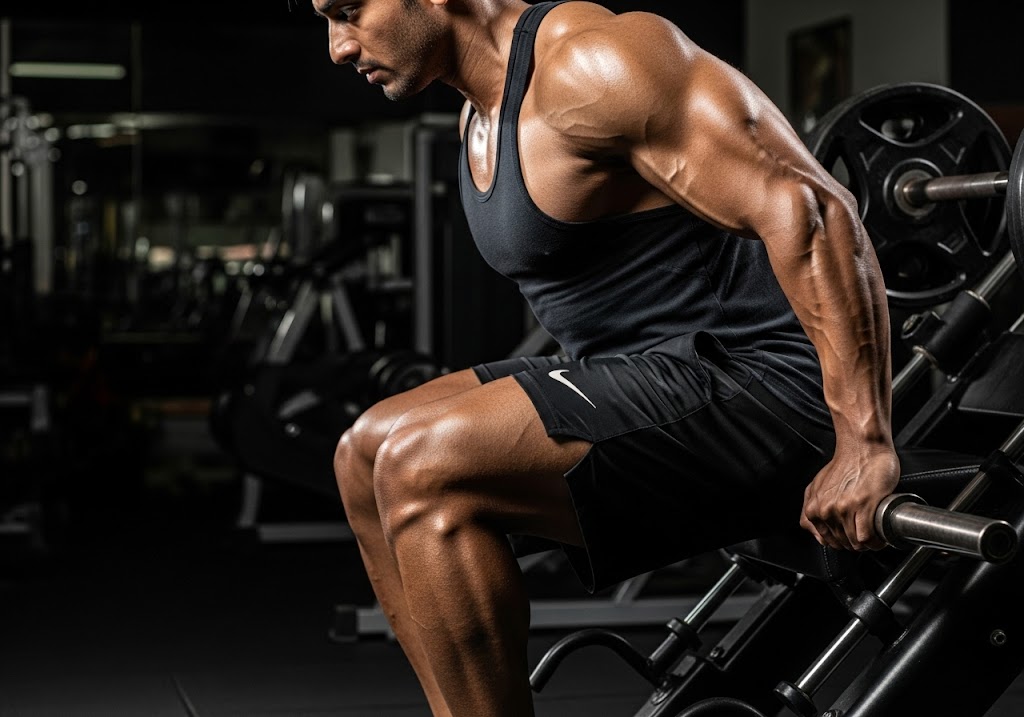
Hack Squat vs Leg Press for Glutes
Glute development potential differs significantly between hack squat vs leg press for glutes targeting. Understanding these glute-specific activation patterns helps optimize your training approach for maximal gluteal muscle development, whether focusing on strength, size, or functional glute engagement patterns.
| Glute Development Factor | Hack Squat | Leg Press |
|---|---|---|
| Natural Glute Activation | High – deep range promotes | Moderate – stance dependent |
| Glute Maximus Emphasis | Excellent – bottom position | Good – wide stance modification |
| Hip Extension Component | High – natural hip hinge | Moderate – limited hip movement |
| Stretch Reflex Benefit | Excellent – deep stretch | Good – depth dependent |
| Customization Options | Limited – fixed foot position | Excellent – multiple stances |
| Functional Glute Training | High – compound movement | Low – isolated pattern |
| Progressive Overload for Glutes | Moderate – stability limits | High – heavy loading possible |
| Beginner Glute Activation | Good – natural pattern | Fair – requires positioning knowledge |
Optimizing Glute Development
Maximizing glute development requires specific technique modifications for hack squat vs leg press for glutes training. For hack squats, focus on foot placement with a slightly wider stance and modest external rotation. Drive through your heels rather than your toes to maintain posterior chain engagement. Pause briefly at the bottom position to eliminate bounce and ensure the glutes initiate the upward movement. Leg press glute optimization involves strategic foot placement and range of motion adjustments. Position feet in the lower third of the platform with a stance wider than shoulder width. Point toes slightly outward and focus on pushing through the heels while maintaining even pressure across the entire foot.
Enhance your training with resistance band exercises for abs for core strengthening.
Conclusion
The hack squat vs leg press decision ultimately depends on your specific training goals, experience level, and individual needs. Hack squats excel for functional strength development, athletic performance, and compound muscle activation. Leg press machines provide superior isolation capabilities, safety for high-intensity training, and accommodation of various physical limitations. Both exercises deserve places in well-designed lower body training programs, with the choice between hack squat vs leg press varying based on training phases and priorities. Consider incorporating both exercises to maximize the benefits of each while addressing their respective limitations for optimal leg development results.
Enhance your training further with exercises from our bodybuilding exercises at home collection.
Want to master the calisthenics handstand and take your skills to the next level? Whether you’re a beginner or pushing advanced skills, ISC – Indian School of Calisthenics offers expert guidance to help you master bodyweight training. Visit us at SRPF Ground, NH8, Goregaon (E), Mumbai – 400065. For class schedules, personalized coaching, or more details, call +91 77159 53218. Train smart, move better, and unlock your back strength with ISC.
Hack Squat vs Leg Press? – FAQs
Which is better for building muscle: hack squat vs leg press?
Both exercises build muscle effectively, but hack squats activate more muscle groups while leg press allows heavier loads for pure quadriceps development.
Is hack squat vs leg press safer for beginners?
Leg press is generally safer for beginners due to better stability and simpler technique requirements compared to hack squats.
Can I do both hack squat vs leg press in the same workout?
Yes, combining both exercises provides comprehensive leg training by utilizing their different movement patterns and muscle activation benefits.
Which exercise in hack squat vs leg press comparison builds more functional strength?
Hack squats develop more functional strength due to greater stability requirements and closer similarity to real-world movement patterns.
How does hack squat vs leg press differ for glute development?
Hack squats naturally engage glutes more through deeper range of motion, while leg press requires foot placement modifications for glute emphasis.
What weight should I start with for hack squat vs leg press exercises?
Begin with 20-40 kg for hack squats and 40-60 kg for leg press, focusing on proper form before increasing weight.
Which has better range of motion: hack squat vs leg press?
Hack squats typically provide greater range of motion, especially for hip and knee flexion compared to most leg press machines.
Is hack squat vs leg press better for athletic performance?
Hack squats generally provide better athletic carryover due to compound movement patterns and greater stability demands.
Which causes less back stress in hack squat vs leg press?
Leg press causes minimal back stress due to supported positioning, while hack squats create moderate spinal loading.
How often should I alternate between hack squat vs leg press?
Alternate every 4-6 weeks or use both exercises within the same training program for comprehensive leg development.

